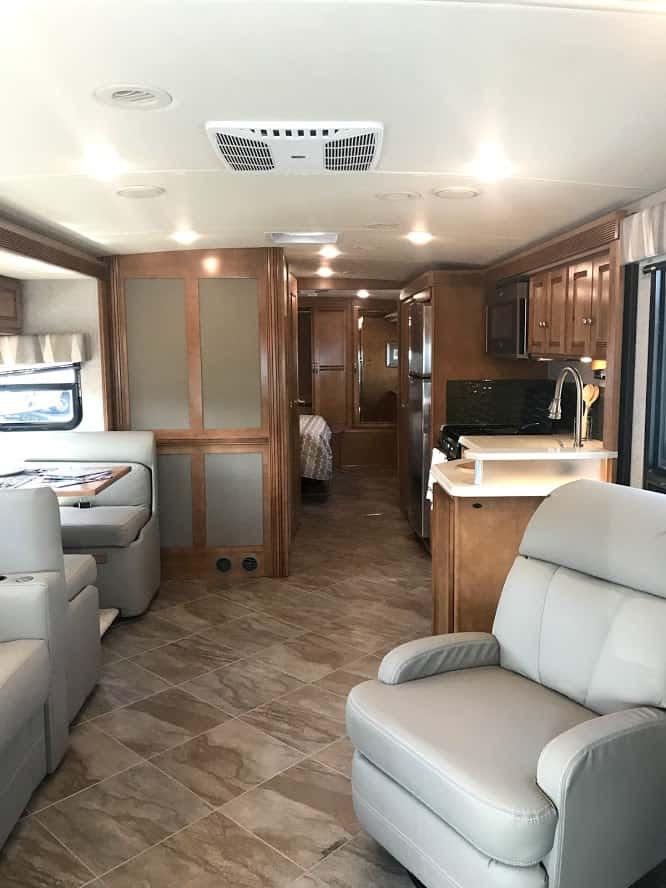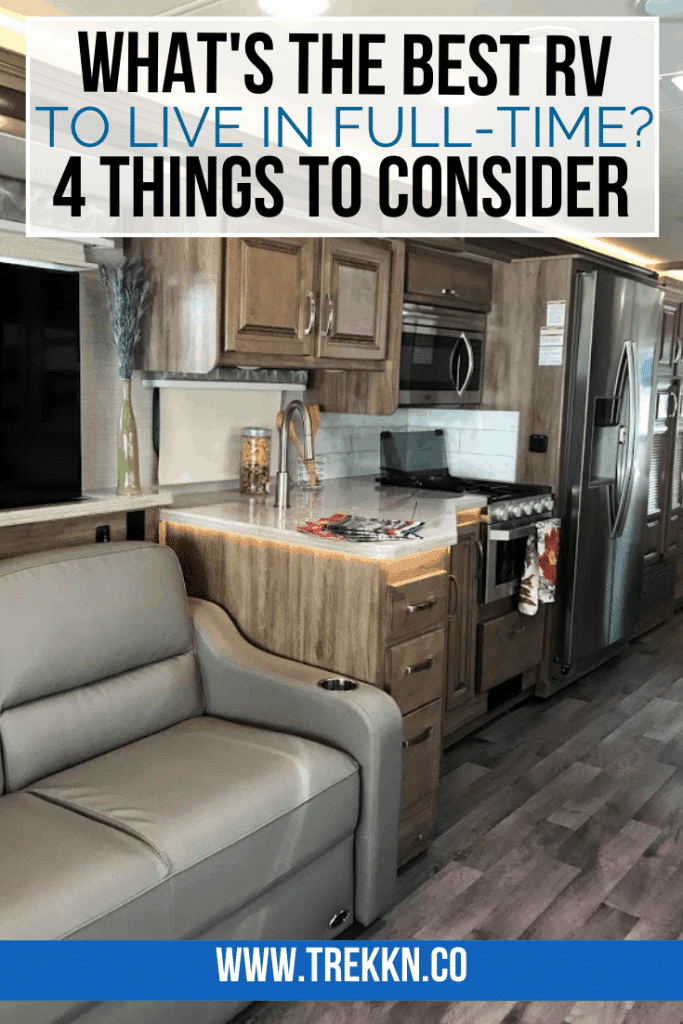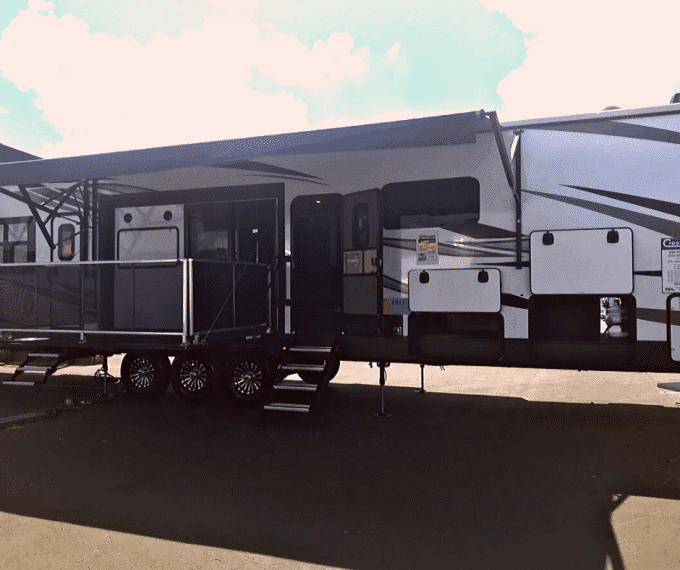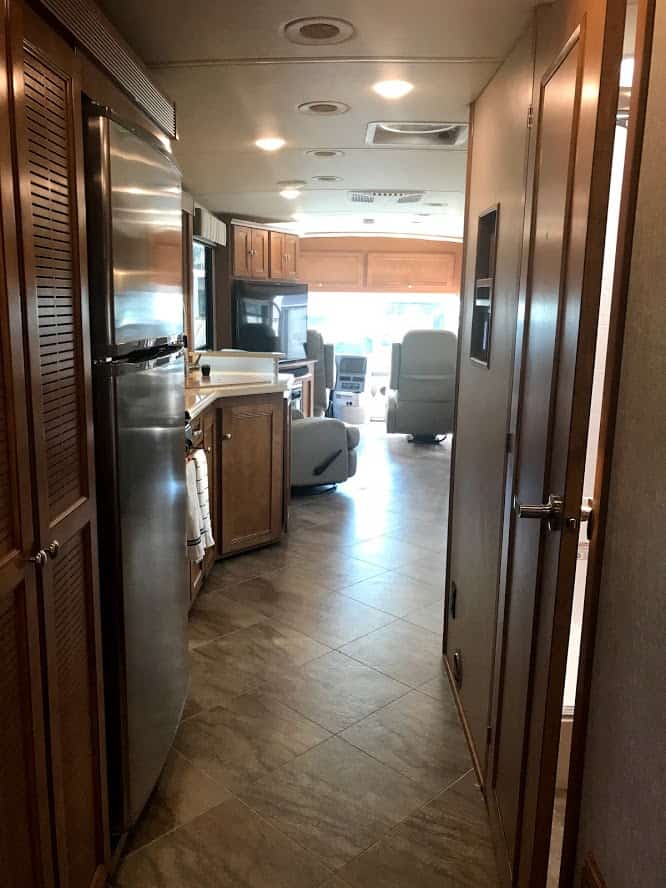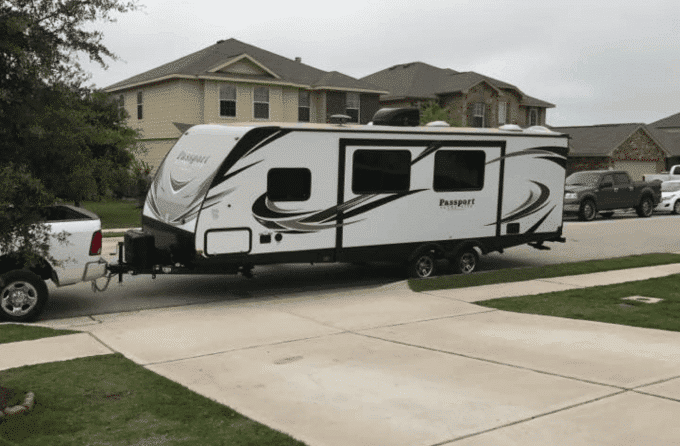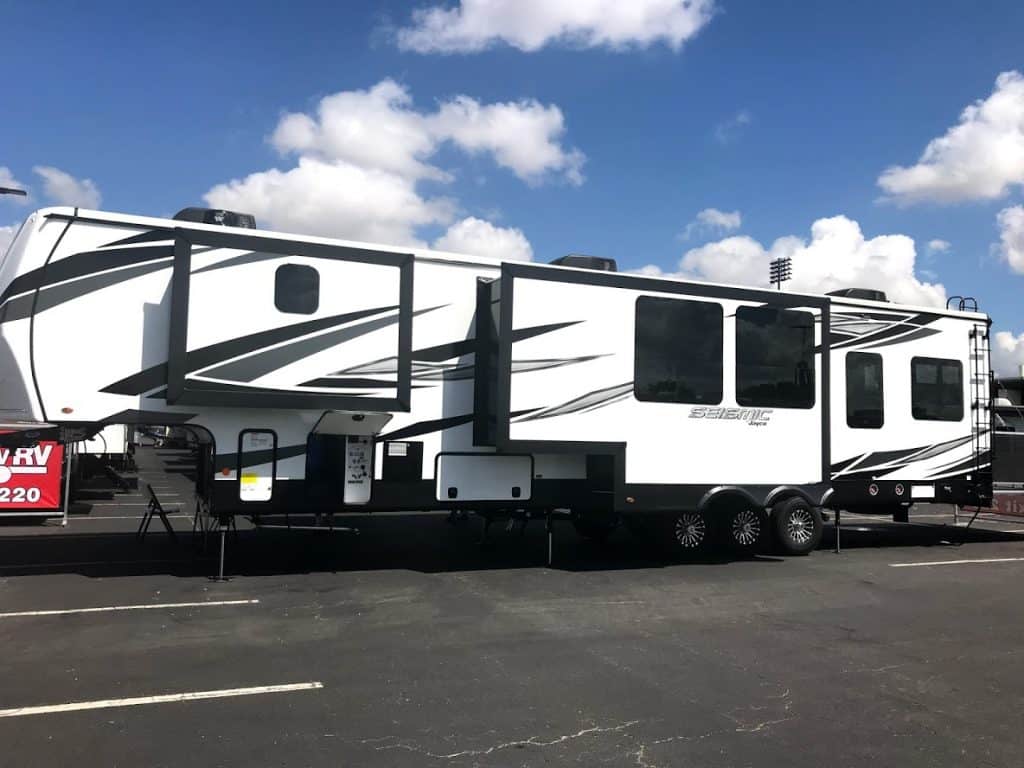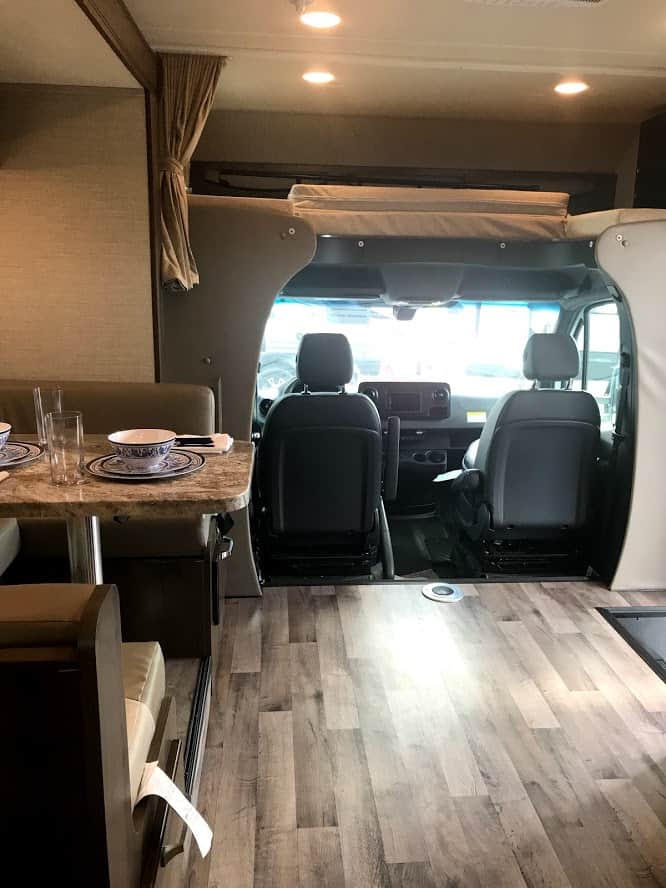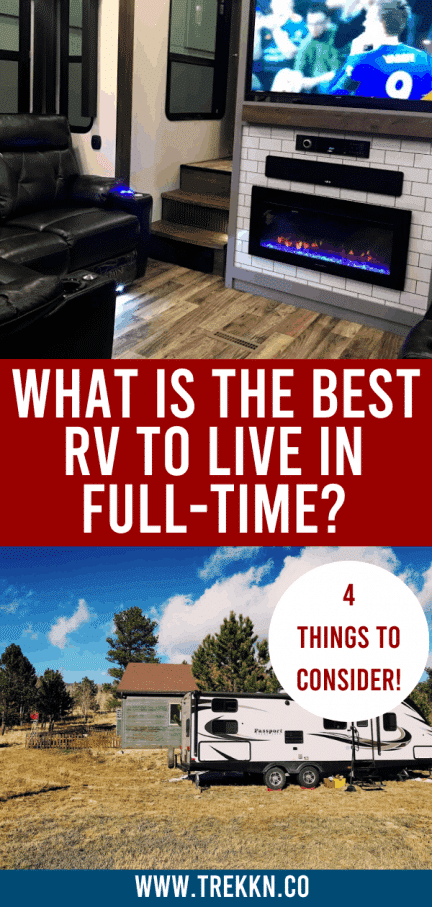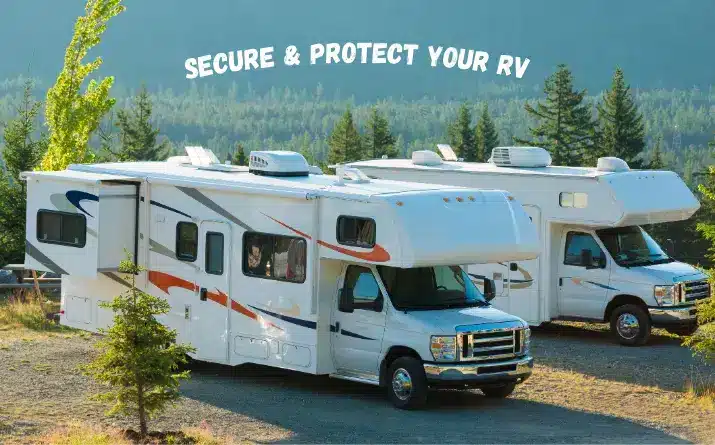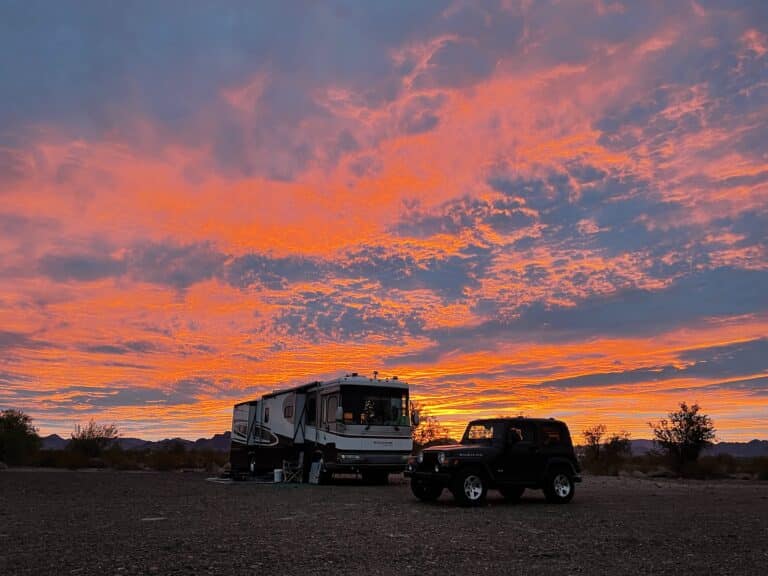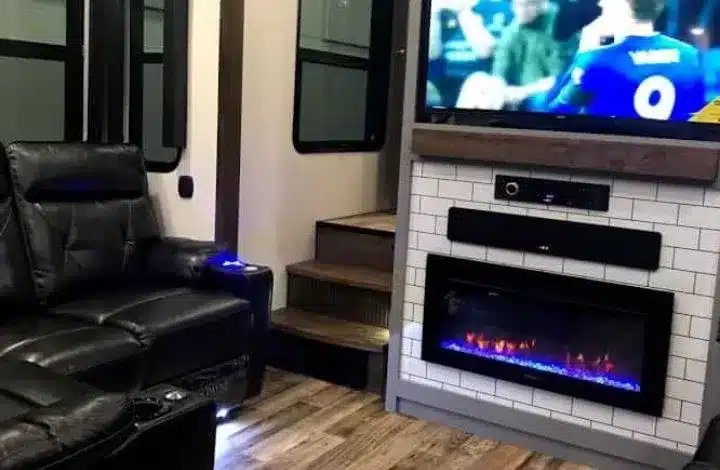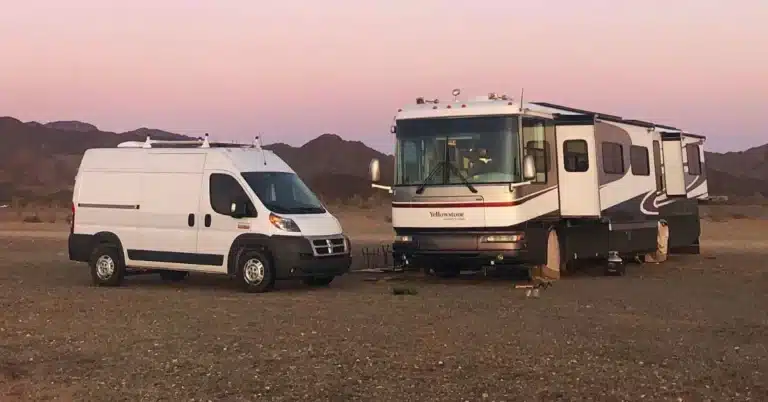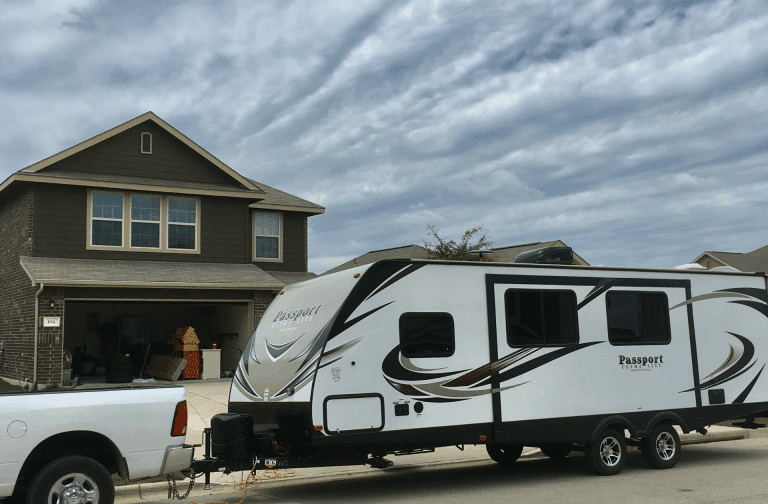Best RV To Live In Full-Time? Consider 4 Key Factors
If you’re anything like me, it probably hasn’t been all that long since you first learned that full-time RV living was even a thing. It is a relatively new phenomenon to sweep through our culture, but it is absolutely growing in popularity still.
With this rise in popularity, more and more people are wondering what is the best RV to live in full-time.
*If you’re still finding yourself wrestling with whether full-time RV living is right for you, you might want to click that link and check out my post on this topic.*
But I can’t really start into this discussion without first warning you: Don’t listen to anyone’s advice on which specific RV is “perfect” for full-time RV living.
Perfect does not exist in this category. Why? Because every individual or family is different as they inch closer to the full-time RV lifestyle, and each situation is unique. That hasn’t kept plenty of folks out there from trying to give you a tidy little list of the best RVs that you should absolutely consider.
We Can Do Better Than Just Another List of RVs
The truth is that I just don’t think a list of RVs like that would be very useful to you, so I’m not going to do it. Sure, we’ve covered quite a few RVs in our video tours that just might work for you (you can take a tour of this Keystone travel trailer or this Keystone fifth wheel, for instance), but I think a fuller discussion of factors to consider will be far more helpful.
Because in case you hadn’t realized yet, this is a BIG decision. It’s one that almost paralyzed me completely as we tried to put the pieces together for our full-time adventure. I don’t want to see the same thing happen to you.
What will help you, I believe, is talking through four major factors that will impact your decision through the lens of our RV purchase and full-time living experience. I feel confident that you will gain a new perspective on your situation by understanding some of the specifics of our situation.
Best RV To Live In Full-Time? Consider These 4 Factors
As you might expect, if you’ve read many of my posts on this site, I’m choosing to start this discussion with a look at prices and budget. I’m a fairly practical dude who likes to operate “by the numbers”, so this only makes sense for me. Then we’ll dive into the concept of luxury purchases and how it might impact your decision.
We’ll wrap it up by walking through your family makeup and your comfort level with driving or towing large vehicles.
Price/Budget Factors
When we jumped into this mind-numbing process, we were starting from scratch. That’s true in terms of our knowledge and our vehicles, because we knew nothing about RVing and we owned nothing (e.g. truck for towing) that would lend itself to this lifestyle.
In our situation, we started off considering all options: driveables (Class A, Class B, Class C) and towables (fifth wheels and travel trailers). We had no existing factors that really pointed us in a certain direction.
If we had already owned a reliable truck that was capable of towing some type of fifth wheel or travel trailer, our search absolutely would have focused there for practical and financial reasons. We would have exhausted all options on that front before seriously considering a driveable RV.
The first few RVs that we looked at on the Crestview RV lot were driveables, actually. We jumped inside a used Class C (priced around $70,000) and a new, smaller Class A (on sale for about the same amount, $70,000).
While we were starting our initial searching, we were also getting some feedback from the salesperson on the specifics of financing a “luxury item” like an RV. (I’ll discuss this term extensively below.)
It turned out, based on our estimated credit scores, that we should expect to bring at least 20-25% of the purchase price to the table as a down payment.
That information began to steer our search very quickly toward the many fifth wheels and travel trailers that this dealership had available. And yes, there were definitely some that we felt could fit the bill of best RV to live in full-time.
THE SEARCH NARROWS FURTHER
And here’s what we soon realized that narrowed our search even further: Since we were only comfortable with bringing $5,000-6,000 as a down payment, fifth wheels were pretty much out of the question. We saw that we could easily spend $50,000 on a fifth wheel, requiring $12,000+ as a down payment.
(We had not sold our house yet since our first step was to see if we could even finance an RV in the first place. That meant that down payment funds were limited to what we currently had saved up.)
Armed with these two nuggets of information that our salesperson helped us understand early in the shopping process, we knew that it was time to take a long, hard look at travel trailer options that would accommodate our family of five.
THE TAKEAWAY FOR YOU
So what is the lesson for you? Be sure to nail down these two numbers (percentage of purchase price you will need as a down payment AND the amount you are able and willing to bring to the table), very early in the process. If you fail to do this, you could waste far too much time (yours and the dealership’s) chasing an RV that is simply not catchable.
Naturally, you will need to seriously consider whether the monthly payment on each RV option is feasible as well. Don’t get yourself into trouble here. But my focus in this post is on getting you through the purchase process itself.
Understand the Reality of Purchasing “Luxury Items”
Here’s a trivia question for you: What type of vehicle purchase isn’t really a vehicle purchase?
The answer is: An RV purchase. Because an RV is classified as a “luxury item” for many purposes, including financing. No, it makes no difference how you intend to use the RV. It is still a luxury.
But what does this actually mean for you in real world terms as you consider purchasing an RV? It means that you can’t think of this like purchasing a car or a truck as you’ve probably done multiple times already. No, this purchase has rules and requirements of its own that you need to be aware of.
YOU’LL NEED MORE THAN YOUR PULSE FOR THIS PURCHASE
For much of my adult life at least, financing vehicle purchases has been a relatively simple process to walk through. It seemed that as long as you had a pulse and claimed to have adequate income, you could get yourself approved for a reasonable automobile loan in a matter of just a couple of hours.
I use the term “claimed” because I really can’t remember the last time that I had to show proof of income when purchasing a vehicle. With a decent credit score, “stated income loans” are handed out like Halloween candy all day, in my experience.
Don’t fool yourself into thinking that financing an RV will look anything like this. I mean, maybe if you have astronomically great credit it could still look similar to this for purchasing a luxury item. But that’s a total guess, because I don’t have astronomically great credit. I can only speak of my experience with good credit (700+ credit score).
I should also point out here that my wife and I had both been self-employed for the previous two years or so when we went through the financing process. For us, it required showing two years of tax returns (plus bank statements) in order to prove our stated income.
It also required a few weeks of waiting, while they examined documents and ran us through their system, to finally get the loan approved. With a stable employment history, your path may be somewhat simpler and quicker.
THE TAKEAWAY FOR YOU
When you realize the difference between a standard vehicle purchase and an RV purchase, it can begin to affect your RV search dramatically and steer you toward the best RV to live in full-time.
In our situation, it was not even close to feasible for us to purchase a $50,000+ luxury item due to the down payment required and the much more stringent loan guidelines. Instead, we ended up purchasing a $24,000 new travel trailer (26 feet) first as our “luxury item”, requiring about a $6,000 down payment.
Then, after we had purchased the RV and also sold our house (with a solid profit), we purchased a used $27,000 3/4 ton long bed truck, with a minimal required down payment, to pull that RV. And yes, that was a “stated income loan” for the truck.
Lesson: Going this route and dividing up your total purchase between the towable “luxury” RV purchase and the standard vehicle purchase will likely make things much simpler overall and streamline the process of hitting the road full-time.
This is assuming that you are not flush with cash and actually need to be careful with your down payment amount.
Family Makeup Makes a Major Difference
I don’t want to spend too much time on this point because I have to assume you are aware of it. But I think there are a few nuances in this category of Family Makeup that I might be able to shed some light on for you.
Look, the family makeup factor was a very challenging aspect for us. Here’s what our family looked like at the time:
- Mom and Dad
- 13 yr old son
- 17 yr old son (just graduated from high school but sticking with us in the RV for a year or more)
- 19 yr old daughter (sophomore in college in Texas, only with us for some of her academic breaks)
So we had four full-sized (or nearly full-sized) “full-timers” and a part-timer in the mix. We were assuming that our daughter would be with us for large chunks of her summer breaks at least, but that wasn’t absolutely certain at the time.
We had to make a decision: Do we go with a larger and more expensive travel trailer to try and give all five of us a permanent sleeping surface (e.g. a bunk room included)? Or do we buy something a bit smaller, suited for four of us “permanent residents” with convertible sleeping options for our daughter’s stays with us that we can get by with?
There was no easy answer to that question, period. We wanted everyone to be as comfortable as possible, of course. But we were also trying to control our spending (down payment and monthly payment) and keep the length and weight of our rig as small as possible for ease of towing and for ease of access to state and national parks with size restrictions.
TAKING ONE FOR THE TEAM
In the end, I guess you could say that our part-time resident (daughter) “took one for the team”. We chose a bunkhouse option that gave the boys larger bunks, bunks that our older son could actually fit in. (The bunkroom models with four bunks would have had him sleeping on a 28″ wide surface that he couldn’t really fit in comfortably at all.)
In addition, this smaller travel trailer (26 ft instead of 29 or 30 ft) made towing, backing and traveling in general quite a bit easier. Since I had never towed much of anything before, that was an important safety consideration for me. (I will talk about comfort level with the size of your rig next.)
It was not an easy decision, and our daughter probably would have made a different one, but we all made it work. We sacrificed some comfort and convenience in order to make a financial decision that felt right in the moment for our circumstances and family situation. We chose the best RV for full-time RV living based on our unique details and we don’t regret it.
THE TAKEAWAY FOR YOU
If you have limited or no experience with RVing, your decision on this front might be more challenging (like it was for us). But remember this: Humans are adaptable beings. You can’t go into this feeling like you need to try and make this home on wheels feel as much like your previous home as possible.
In my opinion, that shouldn’t be the point. This is a completely new adventure with new rules and new limitations, and pushing the limits of your comfort and convenience only makes sense.
Live within those new limitations and make a wise decision based on the actual needs of your family and the specifics of your financial situation. I don’t believe you will regret that.
Consider Your Experience and Comfort Level with Driving or Towing Large Rigs
Driving or towing an RV is exhausting. It should be exhausting, because it requires far more of your attention and mental capacity to stay safe on the road than driving a standard vehicle.
Prior to hitting the road with a large truck (RAM 2500 Long Bed 4X4 with 5.7L Hemi) and brand new travel trailer, the only large vehicles I had driven were moving trucks. Moving from Georgia to Colorado in 2008, we maxed out a 24-foot moving truck (leaving furniture behind for lack of space) and towed a vehicle on a dolly behind it. That was the extent of my “big rig” driving experience, essentially.
So when I stood next to 36-foot or 38-foot fifth wheels, I was dumbfounded. And slightly terrified. For crying out loud, I had never even owned a TRUCK of my own before! I would be getting used to everything simultaneously.
GUARD AGAINST BEING OVERLY OPTIMISTIC ON THIS FRONT
In my endless research prior to purchasing the RV, I saw so many videos detailing horror stories with large RVs: Backing into electrical pedestals in RV parks, ripping off awnings by hitting nearby trees, losing control on the highway, accidentally going down height- or length-restricted roads, etc. It caused my pulse to quicken considerably!
After looking at our options and considering all factors we’ve discussed above, I also knew that I felt reasonably comfortable and confident in learning to maneuver a 26-foot travel trailer. Beyond that size, it just felt like a different ballgame, and I didn’t feel prepared nor equipped to play that game.
Sure, I could have thrown caution to the wind and just gone “all in” with a massive fifth wheel (which would have also required a much more expensive truck purchase). But I believe I would have regretted it and potentially would have suffered the consequences. I had a couple of close calls backing my trailer, and they likely would have become massive headaches if my rig was larger.
THE TAKEAWAY FOR YOU
Optimism is great. It is often helpful. But optimism unchecked by your own sense of responsibility and safety is dangerous. Keep your RV purchase decision in check by being honest about your capabilities (and your aptitude) on the driving front.
Only YOU Can Decide Which is the Best RV to Live In Full-Time
I know, it would have been great if you could have opened up this post and discovered (magically) which RV was ideal for you. That would be simple and easy…and impossible.
Walking through the process and considering these four factors that I discussed really is your only way forward with any confidence. I know it’s taxing, mind-numbing, overwhelming and a bit terrifying, but that will just prepare you for adjusting to full-time RV living. Because it requires that you flex a new set of muscles that can be challenging to develop at first.
Here’s what I know for sure: It’s all worth it.
I speak from experience. I can tell you that our decision to sell our home and most of our possessions and hit the road with our family of five proved to be probably the best that we have made in our 23+ years of marriage.
It created a treasure that no one can take away from us: time together, a deeper bond, an expanded appreciation for our world and for humanity, and mind-blowing memories for a lifetime. Don’t quit now!
Oh, and if you really want to keep exploring all things related to full-time RV living, take a look at these related posts on TREKKN:
- Is RV Living Worth It?
- How to Live in an RV with Your Family and Actually Enjoy It
- RV Names 101: Ideas for Giving Your RV a Name
- Learn the Art of Letting Go Through Full-Time RV Living
- Here’s Why You Will Use These Campground Memberships the Most
- Enjoying Our National Parks: TREKKN’s Top 10 Tips
Happy trails, my friend!
PIN THIS

Todd loves a competitive game of table tennis, a breathtaking hike, and exploring new places. He lived and traveled in an RV with his family as they traveled throughout much of the US and parts of Canada. Todd has extensive knowledge about RV travel, safety, and accessories and has shared many of his stories here on TREKKN. When he’s not busy launching and building small businesses, you may find him staring at pictures of Glacier National Park (probably his favorite spot on earth).


